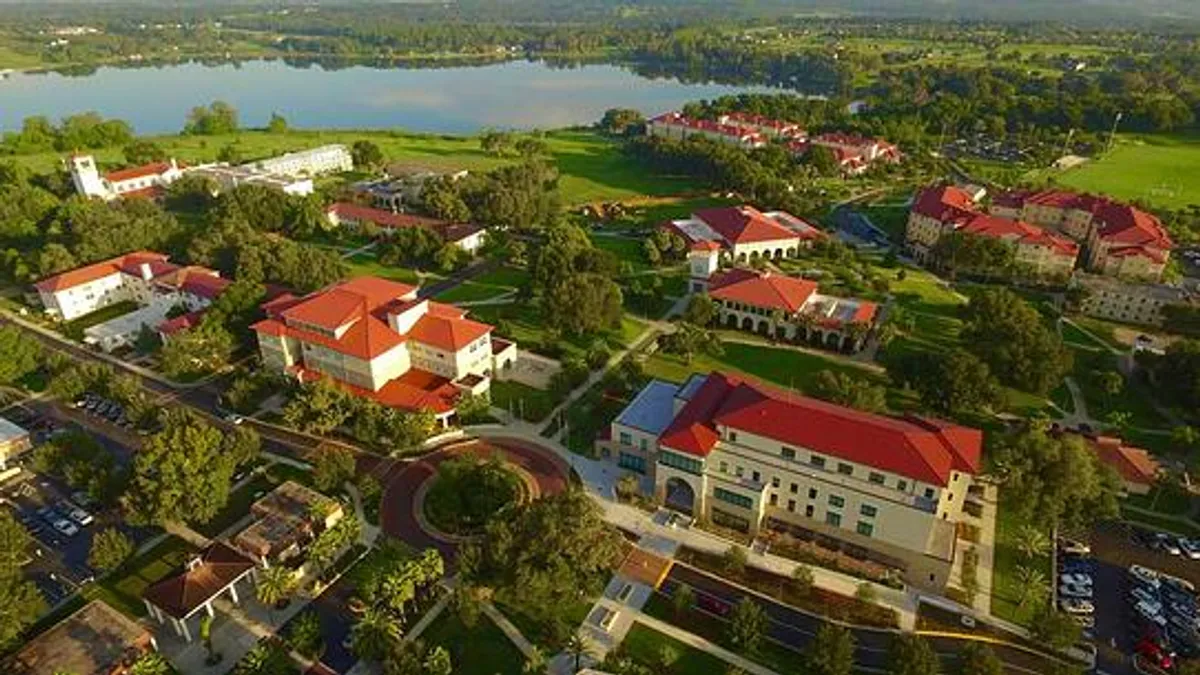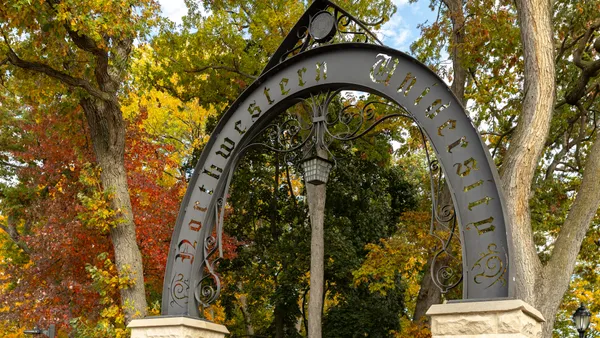Dive Brief:
- Saint Leo University announced a series of sharp cuts Thursday, seeking to become more efficient and focus on growth areas after an audit of enrollment trends.
- The Catholic institution in Florida will eliminate 111 faculty and staff positions, close eight of 14 branch locations, shut down six of 23 sports teams, and end three degree programs.
- Plans for the cuts come less than a year after an attempt collapsed for Saint Leo to grow by acquiring Marymount California University. Saint Leo’s accreditor, the Southern Association of Colleges and Schools Commission on Colleges, didn't back the deal amid concerns about Saint Leo's budgeting.
Dive Insight:
Saint Leo's new plans demonstrate the high levels of uncertainty gripping even some colleges that see themselves as buyers in higher education’s hot merger-and-acquisition market.
Saint Leo once planned to have expanded to the West Coast by this time through an acquisition of Marymount California, which had a Los Angeles area campus enrolling more than 500 students. Instead, Saint Leo is shedding its own branches, and the president who led it during the merger attempt is gone.
Initially, Saint Leo, which is based about 30 miles north of Tampa, planned to close on its West Coast acquisition in January of this year. Marymount California had been seeking a partner for years as it faced enrollment declines. Through the deal, the Florida university would also have taken on Marymount's debts.
But after the accreditor refused to sign off, Marymount California said it would shut down. In September, the University of California, Los Angeles announced a deal to buy two of the former Marymount California campuses for $80 million.
The president who helmed Saint Leo when the merger was announced, Jeffrey Senese, resigned less than three months after acquisition talks fell apart. Senese was replaced in July by Edward Dadez, who had been Saint Leo's provost.
Saint Leo didn't comment on the reason for the personnel change when it was announced.
The institution has experienced sharp enrollment declines in the last decade, according to federal data, which shows fall 2021 enrollment totaling 9,523 students. That's down from 15,564 a decade earlier.
Saint Leo says its unduplicated headcount over a year is more than 15,300. Last fall it launched a world campus offering online degree programs in Spanish in Latin America, which has enrolled over 1,000 students to date, it said.
The university has suffered operating losses in recent years, losing almost $7 million in fiscal 2022, $1.6 million in 2021 and $17.3 million in 2020, according to audited financial statements.
Now comes word of substantial cuts. In the next six months Saint Leo will close education centers it operates in five states: two in South Carolina, one in Mississippi, one in Texas and four in Florida. Students enrolled in those locations can continue their coursework online, the university said.
Six athletics programs will end when their seasons close. Saint Leo didn't immediately say which programs were affected because several teams were traveling and it planned to discuss the changes with them when they returned to campus. The institution competes in NCAA Division II athletics.
Academic programs being shut down include a bachelor's degree program in international hospitality, a bachelor's in human services and a master's in human services. The institution is moving degree programs in its current education and social services college into other colleges at the end of the academic year.
Of the 111 faculty and staff positions cut, 27% were "recently vacant," according to Saint Leo. Some of the positions were eliminated as of Thursday, while others will remain through the end of the academic year, a spokesperson said in an email.
The institution now intends to focus on growth areas. They include a bachelor's program in nursing, programs within a college covering computing, artificial intelligence, robotics and data science, and professional development for businesses.
The called-off merger didn't affect Saint Leo's current plans, which are part of ongoing work to respond to enrollment trends and become more efficient, according to the university's spokesperson.
“We needed to right size by cutting expenses,” Saint Leo's president, Dadez, said in a statement. “We are now in a much stronger financial situation. We will now strive to hit our campus and online enrollment numbers; add academic programs that will increase enrollments; develop new revenue streams; and increase our university donor program. These strategies will provide stability and opportunity for growth.”













